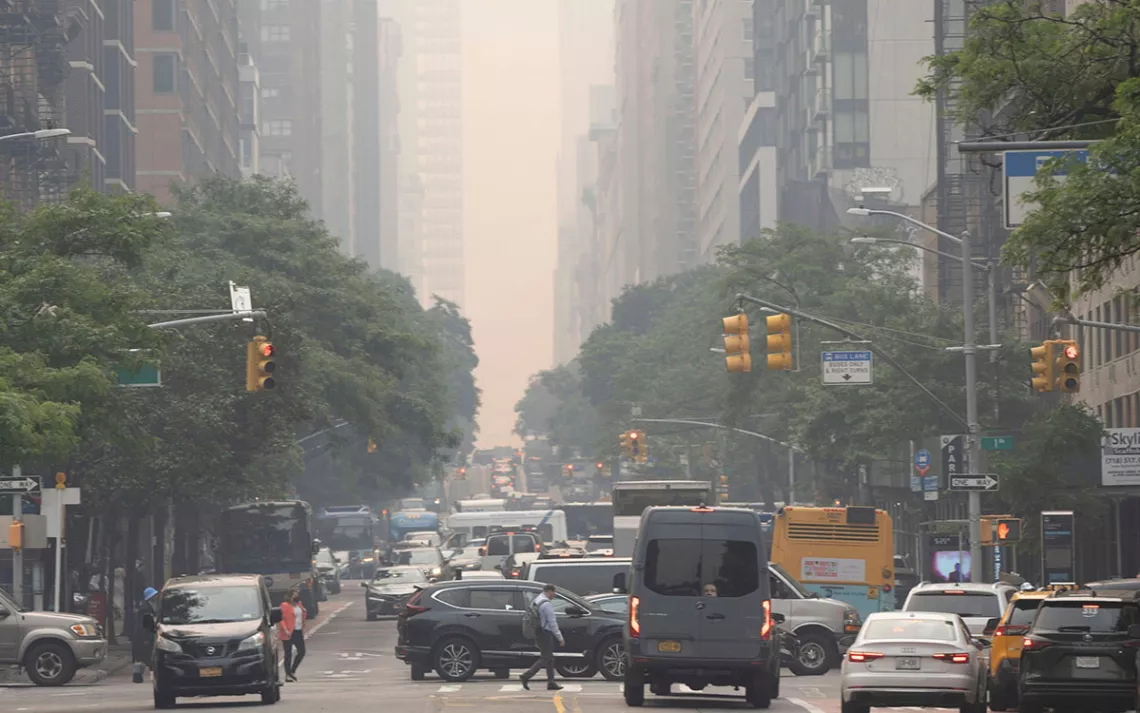For New York City, Cutting Tailpipe Pollution Needs to Start at Home
It’s time for the city to transition its automotive fleet to electric vehicles

Photo by Taidgh Barron/ZUMA Press Wire via AP
Distributed by Trice Edney Newswire
For Leslie Vasquez, an activist with South Bronx Unite, the same word describes the need and the timeline for New York City to act on climate pollution: immediate.
“Communities like the South Bronx, where I work, have suffered far too much and far too long from disproportionate fossil fuel pollution,” she told New York City Council members last December. “For communities like the South Bronx, asthma rates are already one of the highest in the country, and children and teenagers visit emergency rooms with respiratory illnesses at rates twice the city's average. We cannot afford to endure additional respiratory illnesses, and we cannot afford to wait another year without government action.”
The city’s health department has found that New York City has the highest density of particle air pollution of any large American city, and some neighborhoods suffer more than others. Communities that experience environmental injustice have a rate of emergency room visits for asthma tied to particle pollution that is eight times higher in than in other parts of the city.
The costs aren’t just short term. Some neighborhoods have average life expectancies that are a decade lower than in more affluent parts of the city.
The city moved four years ago to cut greenhouse gases from its largest culprit: buildings. Less has been done to curb emissions from its second-largest source, one that the government officials, journalists, advocates, and activists in New York City this week for Climate Week will have to confront just like residents do every day: pollution spewed out of tailpipes.
The city government can take a huge step to cut that pollution by addressing its own fleet, which at more than 30,000 vehicles is the largest of any municipality in the country. A city council proposal backed by Majority Leader Keith Powers and many environmental and climate justice groups would require the city to go to zero-emission vehicles essentially by 2035—every police car, ambulance, fire truck, sanitation truck, school bus, and street sweeper.
The proposal is the most ambitious of its kind in the nation, setting specific deadlines to end the purchase of each vehicle class. Powers along with representatives from the Union of Concerned Scientists and the Sierra Club made a strong case for it to Climate Week participants on Wednesday.
As a state, New York is trying to lead in cutting pollution from transportation, specifically government-operated vehicles. Last year, New York set a target to make sure all 50,000 school buses across the state are electric by 2035.
Protecting children in that way is a laudable start. The next step must be to prioritize communities like the South Bronx to be the first to feel this relief.
In 2019, New York City stepped up to take on climate pollution from buildings. The Climate Mobilization Act will cut greenhouse gas emissions from buildings by 40 percent, with buildings bigger than 25,000 square feet required to meet strict pollution standards beginning next year.
The city is poised to take the next step by creating a zero-emissions fleet. If it does, New York City will combat the climate crisis, safeguard the health of New Yorkers, and send a signal to cities and towns across the United States about what is possible.
 The Magazine of The Sierra Club
The Magazine of The Sierra Club



